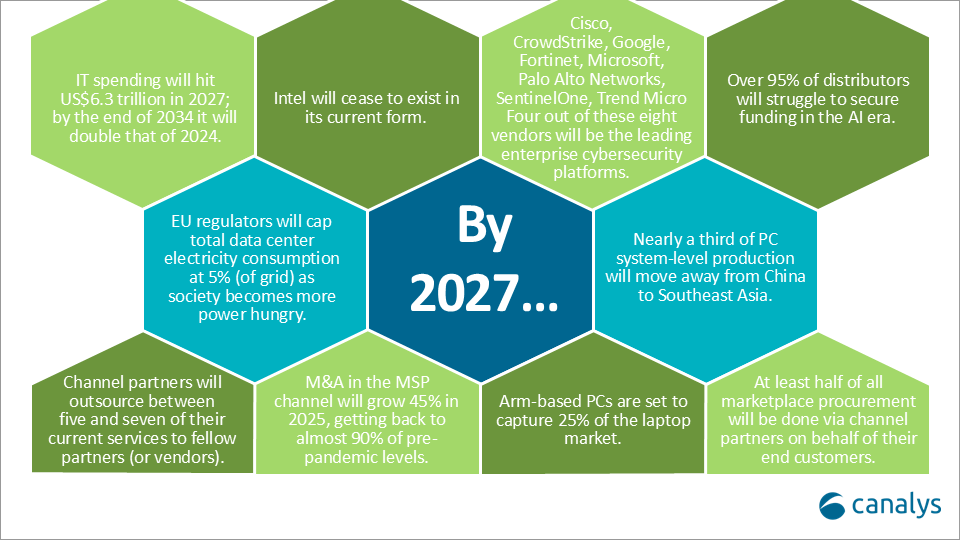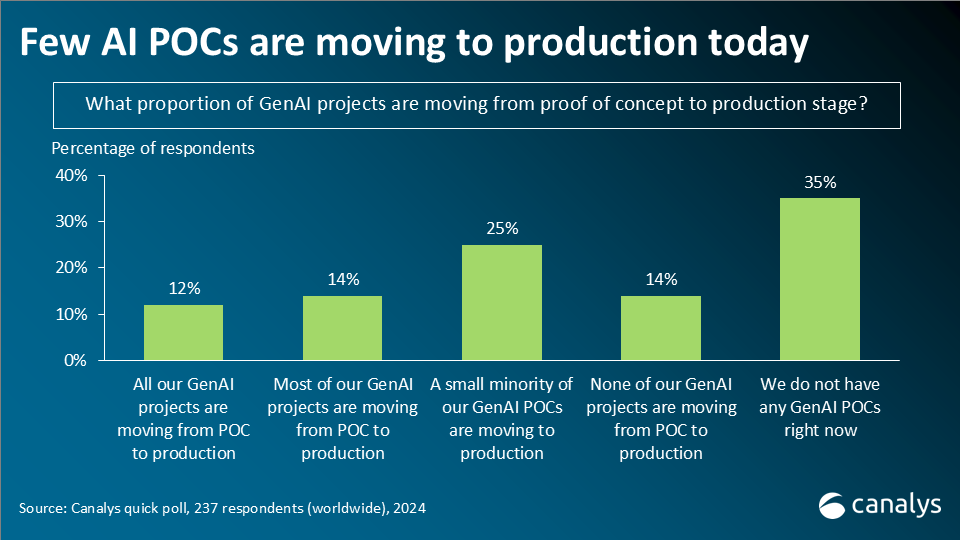Expanded Scale and Leadership in B2B: From R&D to ROI
With a combined permissioned audience of 50+ million professionals, TechTarget and Informa Tech’s digital businesses have come together to offer industry-leading, global solutions that enable vendors in enterprise technology and other key industry markets to accelerate their revenue growth at scale.

iPhone 16e kicks off Apple’s AI drive in 2025
Apple refreshed its entry level iPhone offering with the iPhone 16e launch on 19 February 2025. The new addition to its iPhone 16 family will be available on 28 February, starting at US$599 for the 128GB version. The iPhone 16e brings Apple Intelligence features and hardware typically found in flagship models.
.png)

Apple refreshed its entry level iPhone offering with the iPhone 16e launch on 19 February 2025. The new addition to its iPhone 16 family will be available on 28 February, starting at US$599 for the 128GB version.
Hardware upgrade and Apple Intelligence are the highlights
The iPhone 16e is set to deliver a substantial upgrade in specifications, offering an affordable option for users seeking an iPhone equipped with Apple Intelligence and hardware features typically reserved for flagship models. By incorporating the latest A18 chipset, which is also in the iPhone 16 and 16 Plus, the iPhone 16e will further expand Apple’s base of AI-capable iPhones, bringing exclusive Apple Intelligence features, such as Genmoji, Writing Tools, ChatGPT integration and Private Cloud Compute capabilities, to a broader audience.
The highlight of the hardware upgrade is Apple’s first in-house 5G chip, the Apple C1, marking a key step forward in Apple’s strategy of proprietary chips. By using its own 5G modem and software platform, Apple achieves greater power efficiency, mitigating the greater power consumption of the AI features. This move will improve cost competitiveness and connectivity capabilities, with the latter more important to unlock new use cases for mobile devices.
Apple has historically used components from previous-generation models to lower the BOM cost and enhance price competitiveness for new iPhone SE models. The iPhone 16e continues this strategy, adopting the same display as the iPhone 14, which will significantly reduce panel costs. Additionally, like prior SE models, the iPhone 16e only provides a single main camera, though it integrates the 2x telephoto option into this single physical camera. The main and front TrueDepth camera specifications of the iPhone 16e are closely aligning with the iPhone 16 to achieve scale. Despite these cost-saving measures, the iPhone 16e adopts the A18 chipset and the same DRAM as the iPhone 16 models to support Apple Intelligence. As a result, the starting price is set at US$599, making it the most expensive SE model to date. This pricing aligns with Apple’s aggressive AI strategy, as the company looks to integrate Apple Intelligence across its entire lineup. By doing so, Apple is projected to ship the highest number of AI-capable smartphones in 2025, significantly contributing to the expansion of its AI ecosystem.

Competitive positioning in the AI-capable smartphone segment
The iPhone 16e will play a vital role in Apple’s global rollout of Apple Intelligence in 2025, serving as a gateway for entry-level users into the iOS ecosystem. Its affordability lowers the barrier to entry, making Apple’s AI-powered features more accessible. According to Canalys’ AI-capable smartphones report, the average selling price of AI-capable Android devices is forecast to fall to US$689 in 2025 – a 30% decrease from 2024. This price shift positions the iPhone 16e as a competitive option in the segment. But as the cost of AI-capable SoCs continues to decline, Apple may face increasing pressure to maintain its market position while balancing price and performance.
Who does the iPhone 16e appeal to?
- Legacy device owners: The iPhone 16e is well-positioned to encourage users of older models to upgrade. According to Canalys and Omdia estimates, the iPhone 11, 12 and 13 are among the most shipped smartphones worldwide, with a combined volume of 373 million units. Targeting the owners of these models presents a significant opportunity for Apple to support its volume share and grow its installed base. More importantly, boosting the installed base of AI-capable iPhones will benefit Apple’s service revenue and third-party service providers, as well as the AI developer community.
- Secondhand iPhone upgraders: With iPhones maintaining high resale value, the iPhone 16e presents a compelling alternative – offering a brand-new, AI-capable device for a small price difference. For example, the iPhone 15 currently has a secondhand value of approximately US$520 in the US, while the iPhone 16e starts at US$599. This pricing makes the 16e an attractive option for consumers looking to try out the latest technologies at a competitive price. Additionally, buyers benefit from the premium experience of shopping via Apple’s authorized channels, with access to trade-in programs and financing options in select markets, further enhancing its appeal.
- Gen Z: As the next generation of Apple’s consumer base, fostering brand loyalty among Gen Z is vital to establish the company’s position as a trendsetter and create long-term engagement with its ecosystem. The early launch of the iPhone 16e could strategically capture demand during the March holidays and back-to-school shopping season, maximizing sales among younger consumers. By offering similar content creation features as Apple’s flagship models while maintaining the core camera functionality, the 16e would resonate with Gen Z users who prioritize social media, creativity and AI-driven experiences.

Emerging markets must become iPhone’s growth focus
The iPhone 16e is well-positioned to appeal to consumers in Latin America and Southeast Asia, where affordability plays a key role. Its 6.1" display provides a familiar transition for legacy device users, easing them into Apple’s ecosystem. Additionally, Apple’s focus on emerging markets aims to offset slowing growth in mature markets, such as China and Japan, ensuring long-term diversification. It is vital for Apple to expand its portfolio through strategic channel positioning with the 16e, working with operators and financing solutions to make the entry level iPhone more affordable for its price-sensitive consumers.
Strengthening carrier partnerships through entry-level plans can enhance accessibility and drive adoption of the iPhone 16e. Historically, the iPhone SE has played a key role in carrier promotions, offering a cost-effective option for entry-level contract plans. The iPhone 16e is well-positioned to further expand this role. According to Canalys, Apple’s operator channel shipments accounted for 25% of total shipments in 2024, underscoring the importance of maintaining strong relationships with telecom providers. By leveraging carrier promotions, Apple can maximize the reach and affordability of the iPhone 16e, further strengthening its position in the market.
While the iPhone 16e is a valuable addition to Apple’s portfolio, it is vital for the brand to strategically allocate resources to assess market demand for an entry-level iPhone. Overemphasizing the iPhone 16e could have unintended consequences for Apple’s brand positioning. Apple has made significant investments in its flagship devices and reducing the gap between its entry-level and premium models could lead to product cannibalization, potentially undermining the appeal of its base flagship models. Striking the right balance between affordability and differentiation will be key to preserving Apple’s brand equity while expanding its reach.







